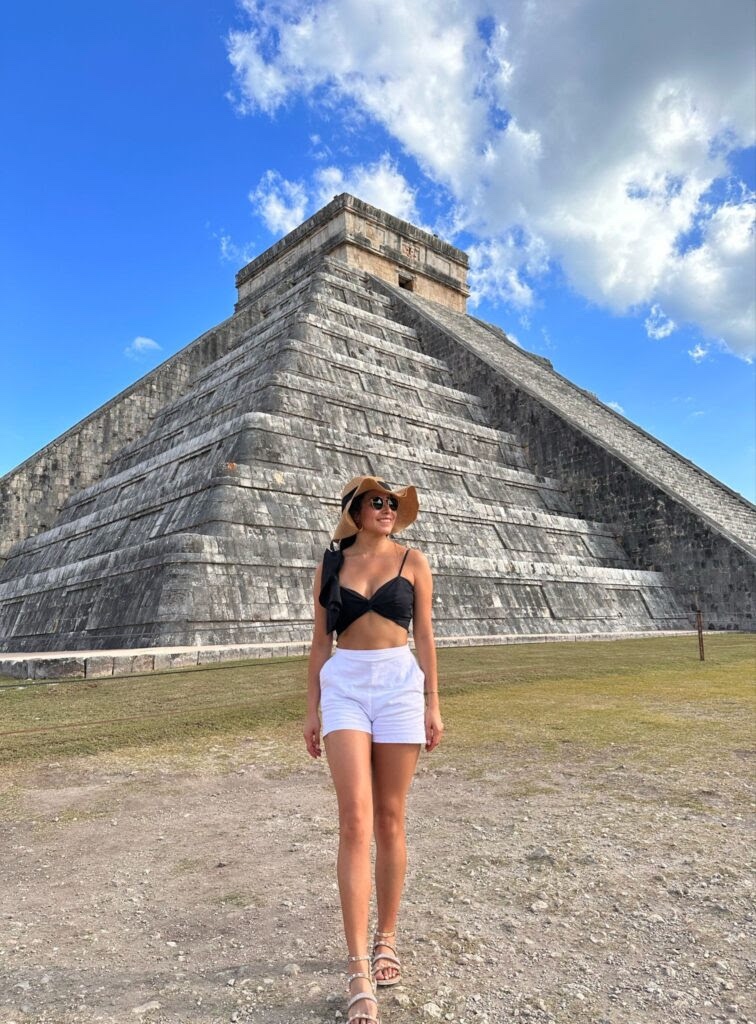It all started with a cozy Sunday in fall when we were watching an archaeological documentary about the Mayan culture and its secrets. One episode introduced Chichen Itza as one of the seven wonders of the modern world, hidden deep in the jungle of the Yucatan Peninsula. Immediately hooked, we decided that Yucatan would be our holiday destination for the year. Tulum, a small city in the south of the Mayan Riviera, far from the tourist hotspots, became our El Dorado for yogis, backpackers, or both.


Upon arriving at the hotel, we registered for a day trip to Chichen Itza. The excursion consisted of four activities, each deserving its own blog post.
After leaving behind 150 kilometers and a time zone, we arrived at a small Mayan community in the middle of the jungle. Their shaman invited us to a cleansing ritual, a nice welcoming event to leave any potential bad spirits behind. Following the ritual, we enjoyed an extensive lunch with Mexican and Mayan dishes, such as Cochinita Pibil Tacos – slow-roasted pork marinated in orange juice and achiote.
With satisfied appetites, we headed to the main attraction of the day, the archaeological site of Chichen Itza. Built around 600 A.D., this place served as a major focal point for more than 700 years in the history of Mayan culture, attracting nobility, clergy, merchants, and warriors. The site features various buildings, but none as striking as the Temple of Kukulkan, towering over all others. Kukulkan, the feathered serpent, symbolizes resurrection and the bringer of rain and wind. The temple alone is worth the trip.
The Mayans were fascinated by time, evident in their precise calendars and architectural design. The Temple of Kukulkan, for example, has 91 steps on each side, totaling 365 steps when considering the last step as the temple’s entry – one step for every day of the year. Even more impressive is the temple’s alignment with the sun’s position. During the Summer Solstice (June 21st), the sun illuminates one face of the temple while the other sides remain in shadow. During the spring (March 21st) and fall equinox (September 21st), an exceptional spectacle called “The descent of Kukulkan” occurs, where the sun interacts with the temple’s stairs, resembling the body of a moving serpent as the sun travels across the sky.
Furthermore, there are other ruins of once majestic buildings, including the Temple of the Warriors and the Temple of the 1000 Columns. A stadium-like building used for the ball game “Pok a Tok” also caught our fascination. In this game, two teams attempted to knock a rubber ball through a ring without using hands or feet. Interestingly, it was not the losing team, but the captain of the winning team who would be executed by the losing team captain, as human sacrifices were integral to Mayan culture and religion.
As this post is getting lengthy, I have decided to split it into two parts to give this trip the attention it deserves.
In conclusion, we would like to recommend some movies/series if you are interested in the topic and want to explore further. “Lost Treasures of the Maya” is the series that initially sparked our interest in traveling to Mexico, perfect for a cozy Sunday watch. Additionally, we suggest watching “Apocalypto” by Mel Gibson. While it may have some historic inaccuracies or dramatizations, members of the Mayan community have deemed it a good mix of authenticity and Hollywood drama.
Love,
Laura



